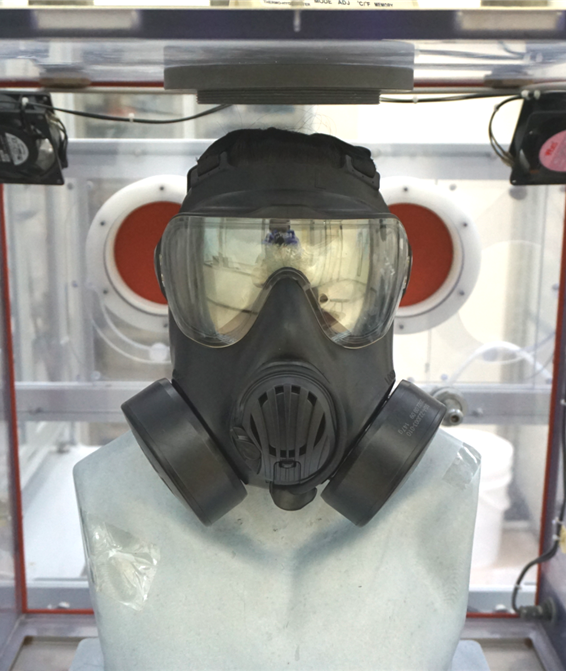The effect of hair and beard on the airtightness of gas masks
A quantitative study using SMARTMAN
DOI:
https://doi.org/10.37944/jams.v7i1.236Keywords:
Chemical, Biological, Radiological and Nuclear (CBRN), hair and beard, gas mask, fit factor, simulant agent resistant test manikin (SMARTMAN)Abstract
This study aims to quantitatively analyze the correlation between hair and beard and the airtightness of gas masks in response to the escalating threat of chemical and biological warfare, changes in military personnel regulations, and grooming standards. Airtightness refers to the ability of a gas mask to fit snugly on the user face, thereby preventing the infiltration of harmful external substances, that is among the primary functions of the mask. Although hair and beard are known to affect the airtightness of gas masks, research is lacking in this area, domestically and internationally, and no studies have analyzed the correlation between gas mask airtightness and hair, including beards, under controlled variables. Therefore, research on the correlation between gas mask airtightness and hair, including beards, is necessary to respond to the current evolving threats. For this purpose, gas masks that passed the airtightness performance test specified in military standards were selected. The masks were fitted on a SMARTMAN (SiMulant Agent Resistant Test MANikin) mannequin head with artificial hair and beard attached, and changes in airtightness were measured based on the presence and condition of the hair and beard. The experimental results showed that the presence of hair and beard at the gas mask–face contact surface decreased the airtightness of the mask, and that the highest airtightness was observed with gas masks of the optimal size. The findings of this study can be used as an important reference material for maintaining the performance of gas masks and the combat effectiveness of the military.
Metrics
References
Baik, S., Kim, W., Lee, N., Yi, H., Jeong, Y., & Ahn, N. (2023). Monte Carlo simulation-based defect ratio estimation approach for a chemical materials stockpile reliability program. Journal of Advances in Military Studies, 6(1), 1-17. https://doi.org/10.37944/jams.v6i1.179
Floyd, E. L., Henry, J. B., & Johnson, D. L. (2018). Influence of facial hair length, coarseness, and areal density on seal leakage of a tight-fitting half-face respirator. Journal of Occupational and Environmental Hygiene, 15(4), 334-340. https://doi.org/10.1080/15459624.2017.1416388
Hounam, R. F., Morgan, D. J., O’connor, D. T., & Sherwood, R. J. (1964). The evaluation of protection provided by respirators. Annals of Occupational Hygiene, 7(4), 353-363. https://doi.org/10.1093/annhyg/7.4.353
Hyatt, E. C., Pritchard, J. A., Richards, C. P., & Geoffrion, L. A. (1973). Effect of facial hair on respirator performance. American Industrial Hygiene Association Journal, 34(4), 135–142. https://doi.org/10.1080/0002889738506822
Kang, S., Kim, S., Churchill, D. G., Ku, K., & Jang, Y. (2023). Review of recently reported Ricin detection techniques focusing on combined immunoassay detection with abrin and saxitoxin in human plasma. Journal of Advances in Military Studies, 6(2), 197-212. https://doi.org/10.37944/jams.v6i2.191
Kim, S. K., Byun. K. S., Lee, S. Y., Park, J. W., & In, C. Y. (2021). A Study on the Process Quality Level of K5 Gas Mask. Journal of Korea Academia-Industrial cooperation Society, 22(1), 74-80. https://doi.org/10.5762/KAIS.2021.22.1.74
Lee, G. H., Kang, H., Chung, J. W., Lee, Y., Yoo, H., Jeong, S., ... & Choi, B. K. (2022). Stretchable PPG sensor with light polarization for physical activity–permissible monitoring. Science Advances, 8(15), eabm3622. https://doi.org/10.1126/sciadv.abm3622
McGee, M. K., & Oestenstad, R. K. (1983). The effect of the growth of facial hair on protection factors for one model of closed-circuit, pressure-demand, self-contained breathing apparatus. American Industrial Hygiene Association Journal, 44(7), 480–484. https://doi.org/10.1080/15298668391405175

Downloads
Published
How to Cite
Issue
Section
License
Copyright (c) 2024 Journal of Advances in Military Studies

This work is licensed under a Creative Commons Attribution 4.0 International License.

This work is licensed under a Creative Commons Attribution 4.0 International License.

이 저작물은 크리에이티브 커먼즈 저작자표시 4.0 국제 라이선스에 따라 이용할 수 있습니다.






